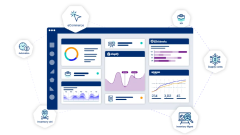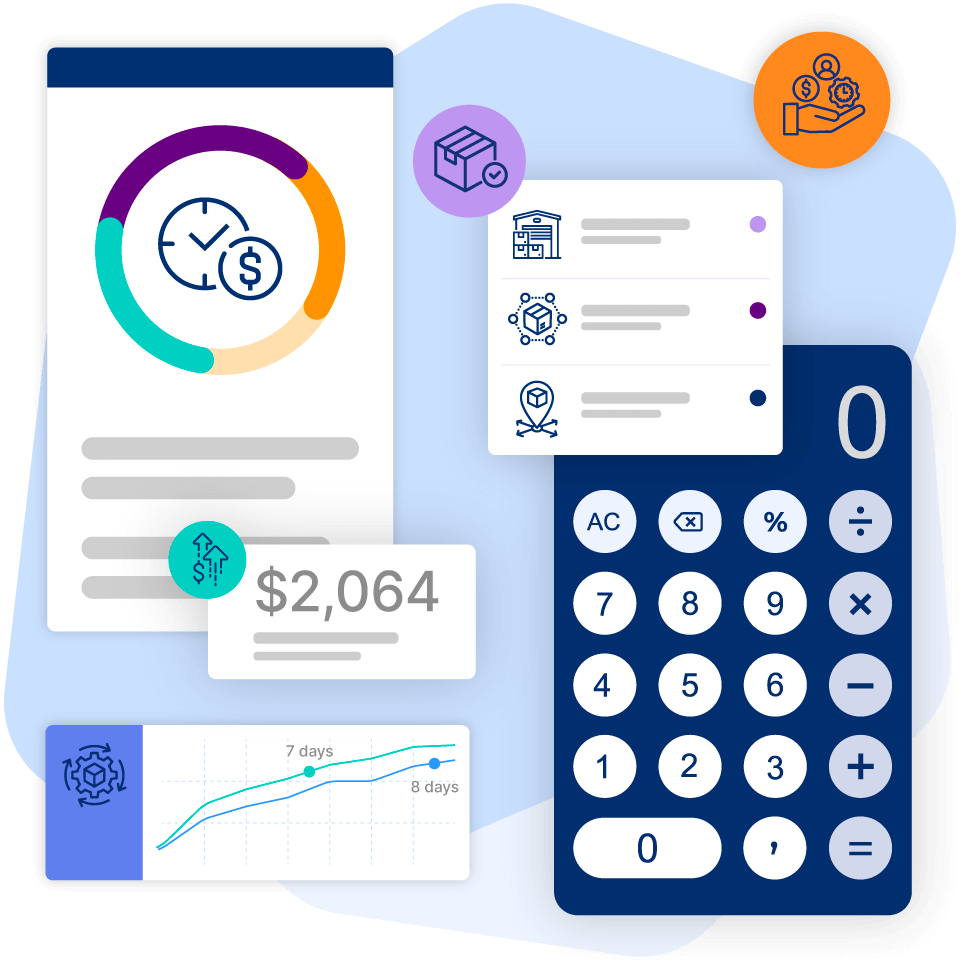The Ultimate E-commerce Metrics Guide for Profitability
.png?width=510&height=267&name=0812_KeyKPIs_Blog_700x366%20(1).png)
We’re Conjura, an e-commerce analytics platform that specializes in SKU-level, omnichannel insights that drive profitability. From our experience, we can tell you that your long-term, sustainable success hinges on your ability to measure what matters, make sense of the numbers, and pivot fast. That’s where these key metrics and KPIs come in, not just as reporting tools, but as the backbone of every smart decision you make.
.png?width=1080&height=1440&name=0812_KeyKPIs_1_1080x1440%20(1).png)
From understanding your true marketing ROI to identifying your most profitable SKUs, the right metrics empower you to:
- Scale profitably by balancing Customer Acquisition Cost (CAC) against Customer Lifetime Value (LTV)
- Optimize inventory and cash flow by tracking sell-through rates and contribution profit
- Improve marketing efficiency by pinpointing which products convert (and which just eat ad spend)
- Increase customer loyalty by understanding what drives repeat purchases and higher order values
Yet for many brands, there's a disconnect between having access to data and using it effectively. KPIs are scattered across platforms like Shopify, Google Analytics, marketplaces and ad dashboards; and many crucial insights, like true contribution profit or repeat purchase drivers, can’t be calculated natively at all!
That’s why we’ve put together this deep dive into the most important e-commerce metrics, what they mean, how to calculate them (maybe with some help from Conjura!), and how they help you grow both top-line revenue and bottom-line profit.
Let’s get into it.
Contribution Profit (per SKU)
What is it?
Contribution Profit per SKU is arguably the most critical metric for any product-driven e-commerce business. While it’s easy to get distracted by top-line sales, what really matters is whether your products are generating profit after all direct costs. This metric reveals which products are helping your business thrive and which ones might be quietly bleeding your margins bone dry.
How to calculate contribution profit:
Why it matters:
It’s one thing to know a product is selling well, but if it costs more to acquire the sale than the revenue it generates, you’re losing money with every transaction. Contribution Profit gives you a true view of product-level profitability. It’s the antidote to “vanity metrics” like revenue, which don’t account for costs. Armed with this, you can confidently stop pushing products that lose money and redirect your marketing and inventory efforts to the real winners.
Customer Acquisition Cost (CAC)
What is it?
CAC measures how much you spend to acquire a single customer. It includes your total marketing and advertising spend over a period, divided by the number of new customers acquired during that same time.
How to calculate CAC:
Why it matters:
In a world where digital ad costs are rising and customer loyalty is increasingly hard-won, CAC has become one of the most-watched metrics in e-commerce. If you’re spending $30 to acquire a customer who only spends $20, your model is broken. A healthy CAC, ideally less than your customer’s lifetime value, is essential for sustainable growth and investor confidence.
Customer Lifetime Value (LTV)
What is it?
Customer Lifetime Value (LTV) estimates the total revenue a customer will bring to your brand over a defined period, usually 12 months in e-commerce. It’s a measure of how valuable a customer is to your business after their initial purchase.
How to calculate LTV:
To get more precise, you can layer in Gross Profit or even Contribution Profit instead of revenue, and match LTV to specific customer cohorts based on acquisition channel or first product purchased.
Why it matters:
LTV is the north star for smart scaling. It tells you not just what a customer is worth today, but what they could be worth over time. High LTV means better ROI on marketing spend, stronger customer relationships, and more stable revenue. It’s also vital for setting CAC benchmarks. If you know a customer is worth $150 over 12 months, you can confidently spend up to $50–60 to acquire them.
Gross Revenue
What is it?
Gross Revenue is the total income your business receives from customer purchases before deducting any refunds, taxes, or discounts. It includes the full value of each transaction at the time of sale, making it the starting point for virtually all e-commerce financial analysis.
Why it matters:
Gross Revenue is the ultimate top-line metric; it sets the stage for measuring everything from profit margins to ROAS (Return on Ad Spend). While it doesn’t tell you anything about profitability, it does give you a clear picture of sales volume and customer demand. It’s especially useful for identifying trends over time, such as seasonal spikes, campaign success, or channel performance.
Repeat Rate
What is it?
Repeat Rate measures how many customers come back to place another order after their first purchase. It’s a vital indicator of loyalty, customer satisfaction, and the long-term sustainability of your acquisition efforts.
Why it matters:
Acquiring customers is expensive. If you can get them to come back and keep coming back, you dramatically reduce your CAC over time and boost profitability. High repeat rates often signal product-market fit, customer satisfaction, and the potential for subscription or loyalty programs.
Average Order Value (AOV)
What is it?
AOV is the average amount a customer spends per order. It’s a direct measure of your ability to increase cart size and encourage bigger purchases.
How to calculate AOV:
Why it matters:
Boosting AOV can significantly increase revenue without acquiring more customers. A higher AOV means greater efficiency in your logistics, better ROAS, and more margin to reinvest in marketing. It’s also a lever you can pull quickly through upsells, cross-sells, free shipping thresholds, and bundles.
Return on Ad Spend (ROAS)
What is it?
ROAS measures the efficiency of your paid marketing by showing how much revenue is generated for every dollar spent on advertising.
Why it matters:
ROAS is your go-to metric for evaluating campaign performance. It tells you whether your ads are generating profitable sales or just burning your budget. A “healthy” ROAS depends on your margins, but for many e-commerce businesses, a baseline of 3:1 is considered strong.
Discover how Conjura increased Furniture Box’s ROAS by 20%
Sell-Through Rate
What is it?
Sell-Through Rate shows how quickly you’re selling your inventory. It compares units sold to the total units available (sold + remaining stock).
How to calculate sell through rate:
Why it matters:
This is a critical metric for inventory management and merchandising. A high sell-through rate means you’re efficiently turning stock into revenue, while a low rate can signal overstock, poor demand, or pricing issues. It helps you plan reorders, markdowns, and promotions with precision.
Product Conversion Rate
What is it?
Product Conversion Rate tracks how effectively a product page turns visitors into buyers. It reveals whether your images, descriptions, reviews, and price are doing their job.
How to calculate product conversion rate:
Why it matters:
This metric is a direct indicator of product-market fit and user experience. A product with high traffic but low conversion likely has a messaging, pricing, or trust issue. By identifying and fixing low-converting SKUs, you can unlock hidden revenue and boost your marketing efficiency.
Why Should You Be Using Conjura?
At Conjura, we believe that data should do more than sit in siloed dashboards; it should drive impactful decisions. Our platform integrates seamlessly with Cin7, Shopify, Amazon, Walmart, eBay and all your marketing platforms to give you holistic, daily insights across your business.
Conjura + Cin7: A Smarter E-commerce Stack
By connecting Conjura with Cin7, e-commerce brands unlock a powerful combination of operational control and performance analytics. While Cin7 manages your inventory, orders, and fulfillment across multiple channels, Conjura overlays this with deep commercial insight, helping you understand why your business is performing the way it is and what to do next. Together, you get unified visibility from SKU-level profitability to stock movement, customer behaviour to marketing efficiency - all in one place. The result? Faster, smarter decisions across teams, and a business that grows profitably, not just quickly.
Here’s what makes Conjura different:
- True Contribution Profit at SKU-Level: Thanks to our ability to track SKU-level ad spend (not possible in Shopify), we’re the only platform that calculates accurate contribution profit for every product.
- Cross-Product Revenue & Landing-Page Metrics: Understand which products actually drive traffic and conversions, even if the customer ends up buying something else.
- Actionable Recommendations: We don’t just show you the data, we tell you what to do with it. From cutting underperforming SKUs to increasing ad spend on high-margin winners.
- Repeat Rate & LTV by Product: Find out which products bring back the best customers and drive the most value over time.
- Omnichannel Analytics: Whether your customers shop online, through marketplaces like Amazon, or in-store, Conjura brings all your performance data into one place. By integrating with Cin7, Shopify, Amazon, and key marketing platforms, we help you see the full customer journey - from ad click to doorstep delivery - across every channel.
Want to see how these insights can transform your business? Book a demo with Conjura and start making profitable decisions faster.
Harry Bray
Harry Bray has worked in the eCommerce data and integrations space for the last 6 years, working both tech and agency side. He is also the Founder and Host of the WTF?! Is Retail? Podcast which has features exciting guests such as Ted Baker, Candy Kittens, Moss and Absolute Collagen.
More from the blog
View All Posts
Essential e-commerce technology trends to implement in 2024
Read More
10 e-commerce trends for fashion and apparel in 2024
Read More




